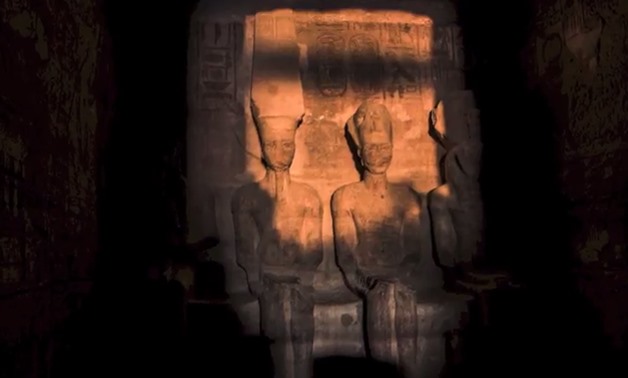
A stream of sunlight glazing the statuettes of Ramses, Ra and Amun in the central chamber; except for Ptah’s statue, the goddess of darkness – Courtesy from YouTube
CAIRO – 19 October 2017: Around 5,000 tourists traveled aboard EgyptAir from October 20 to October 22 to Luxor and Aswan to attend the sun festival, where sunlight streams set Abu Simbel’s temple ablaze.
As part of EgyptAir’s efforts to enhance tourism in Egypt, the company is organizing 50 additional flights to transfer tourists to Luxor to celebrate sun rays weaving through stones and glazing the statuettes of Ramses at Abu Simbel temple, said Chairman of the Holding Company for EgyptAir Safwat Muslim.
Ramses II built his temple at Abu Simbel so that the internal chamber would light up two times a year: once on the anniversary of his ascension to the throne on February 22 and once on his birthday on October 22.
Every year, crowds gather before sunrise in a celebration known as the sun festival to observe the stream of light gradually sneaking through the stones and lighting the statuettes of Ramses, Ra and Amun in the central chamber. However, Ptah’s statue, the goddess of darkness, remains in the dark even on these two days.
After observing the solar phenomenon, tourists participate in the dancing and singing shows presented in the festival.
Abu Simbel is the site of the two temples built by the Egyptian King Ramses II to impose his political clout and divine worship on ancient Nubians. On each side of the temple, two statues of the pharaoh are carved into a sandstone cliff overlooking the Nile’s second cataract.
The two temples were discovered by Swiss explorer Johann Ludwig Burckhardt in 1813 during his travel to Nuba.

Comments
Leave a Comment